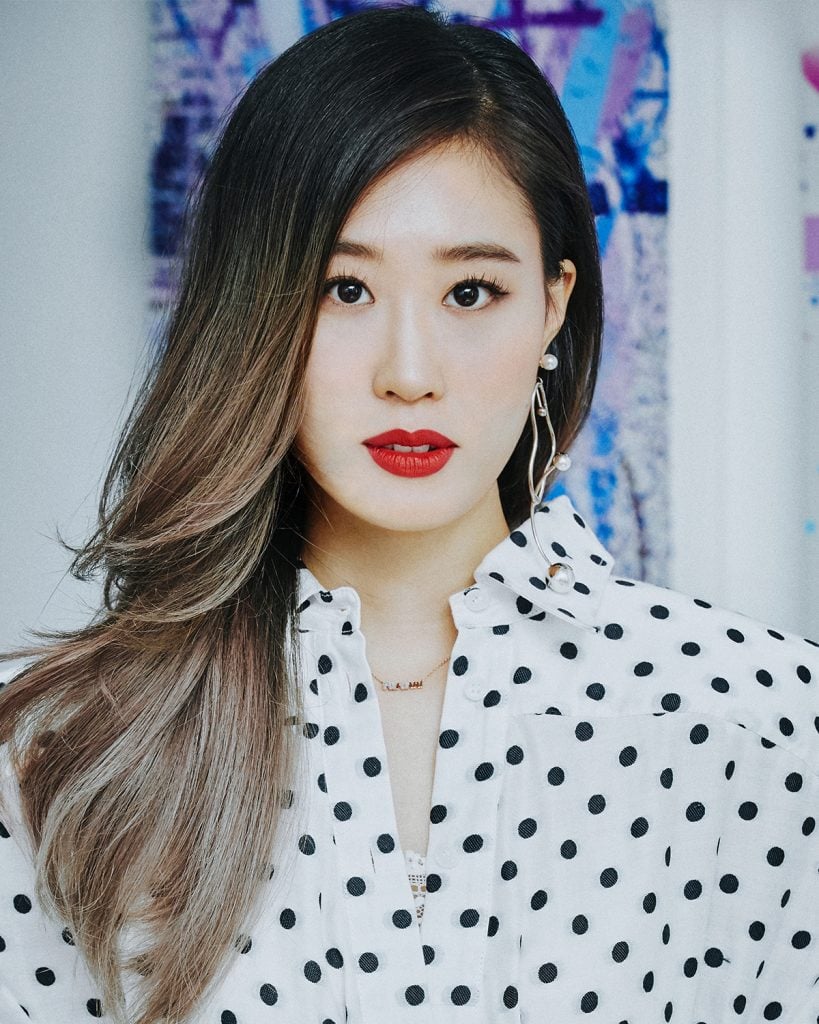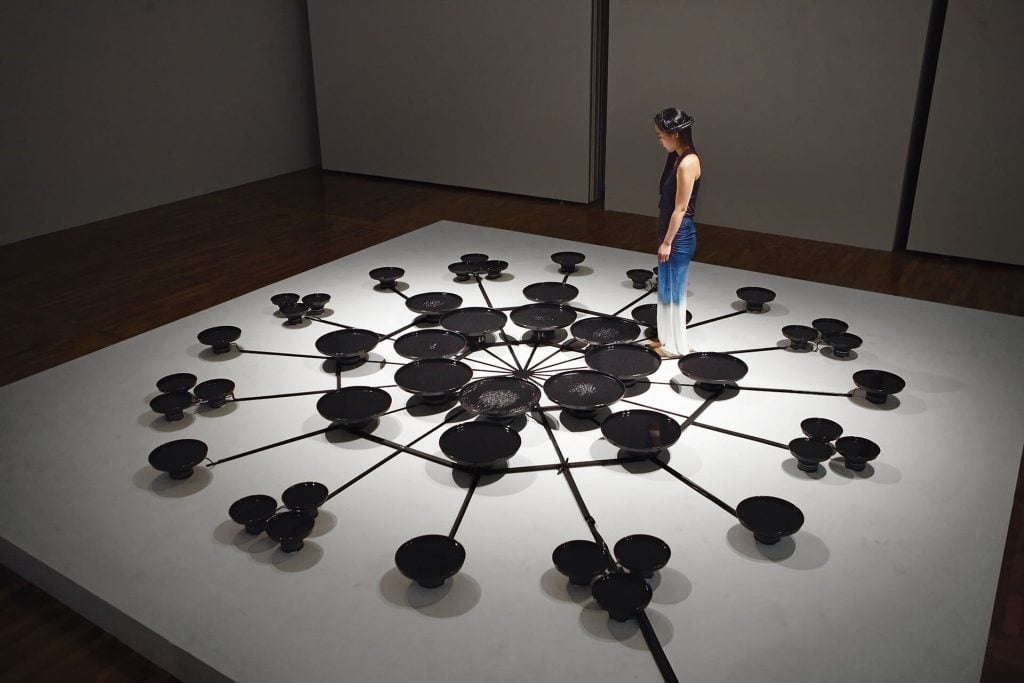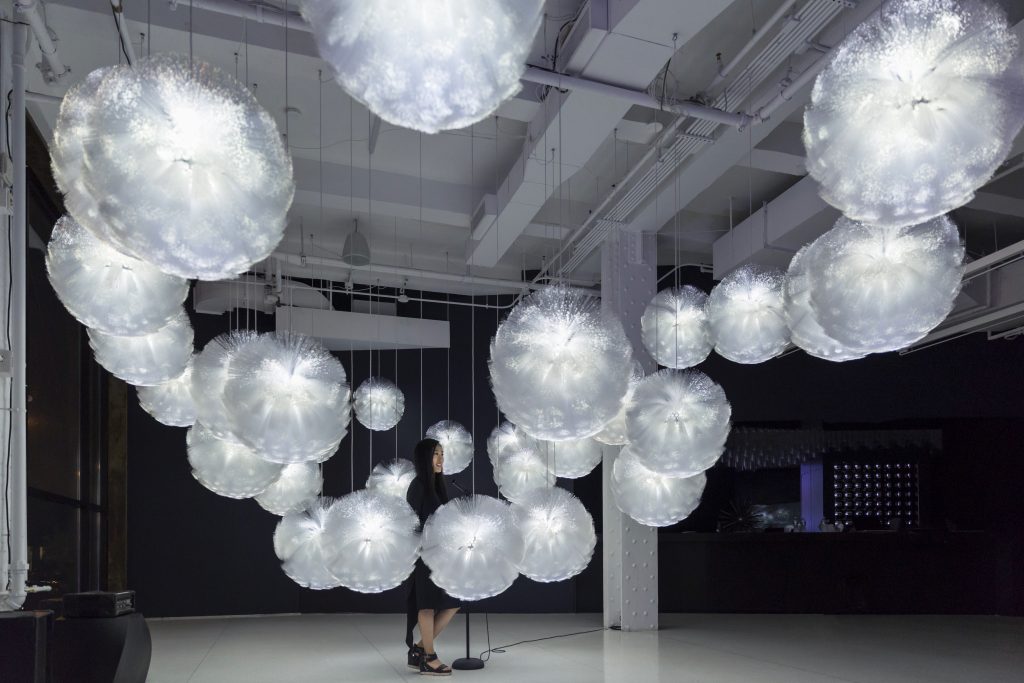People
Artist Lisa Park on How to Use Technology to Engage More Meaningfully With Human Emotion
The artist spoke to Artnet about her interactive practice.

The artist spoke to Artnet about her interactive practice.

Maria Vogel

In these turbulent times, creativity and empathy are more necessary than ever to bridge divides and find solutions. Artnet News’s Art and Empathy Project is an ongoing investigation into how the art world can help enhance emotional intelligence, drawing insights and inspiration from creatives, thought leaders, and great works of art.
Is it counterintuitive to embrace technology when the aim of your work is to ultimately expand and further human empathy?
American-Korean artist Lisa Park thinks not. Park’s art practice is grounded in the idea that developing technologies typically used in the scientific field can play a significant role in the visual exploration of empathy.
Using equipment such as brainwave and gesture-tracking sensors and heart rate monitors, Park’s work seeks to illustrate how deeply rooted emotions affect the body and the subconscious mind beyond what we see can see.
In the same way that a painting or sculpture might hope to reveal universal human truths, Park’s approach welcomes a more literal exploration of topics that have been discussed in art history for centuries. Here, we chat with Park about how she first became interested in the intersection of art and science, how she’s creatively recharged over the past year, and what the future of empathy’s role in the art world looks like.
When did you begin investigating empathy in your art practice?
At first, I started using sensor technology as a way to understand myself. Understanding human emotions has been an ongoing investigation in my artistic practice, which strives to highlight qualities that are innately human. In many ways, It has been a self-reflective process.
Do you see a difference between how empathy is regarded between Eastern and Western cultures?
I see cultural differences between Eastern and Western societies. In Western culture, people are more expressive and more open about their feelings and opinions. In Asia, people tend not to directly reveal their feelings because [of more overarching cultural values like] virtue and humility. However, we have a common understanding of empathy because we live in a globalized world where we are exposed to multiculturalism, oftentimes through art forms like film, music, and the visual arts.
When did you first become interested in pairing elements of science with your artwork?
While studying at NYU for my master’s degree, I became interested in using sensor technology like heart rate monitors and brainwave headsets to better understand my own internal workings. Since then, I have been using technology as a tool to display invisible physiological measurements as visual and auditory representations that you can “see.” Over the past few years, I have created interactive installations and performances in which the audience participate and become part of the work.

A performance shot of Lisa Park’s “Eunoia II.” Image courtesy the artist.
Your practice involves biofeedback devices. Can you tell me more about how you use them and how they add meaning to your work?
I think there are layers of complexity in understanding others through verbal and nonverbal cues. The visible (facial expressions, voice tones, gestures) and the invisible (heart rate, brain waves) layers are often at odds. I am interested in expressing the invisible inner states as external expressions so that the audience can connect on a deeper emotional level with one another. The fun thing about using biofeedback devices is that I’m not fully aware of how I’m feeling or how I appear until my unconscious or conscious behaviors and thoughts are expressed in sounds or visuals.
What are you working on now?
My new work is currently on display at the Ocean Flower Island Museum. It is an artificial island with futuristic architecture, scenery, and convention facilities in Hainan, China, which was recently opened. Due to the pandemic, I was unable to travel for the installation, but I may visit later this year before it closes in December. And in May, I have an upcoming show at the National Museum of Modern and Contemporary Art in Korea. So I’m currently in production mode preparing for that.

Photo courtesy Lisa Park.
How do you recharge creatively these days?
My inspiration comes from my surroundings, experiences, and relationships. As the pandemic situation is slowing down in Korea, I’m spending more time outside, which has been revitalizing. I like to spend my weekends visiting museums and galleries with friends and family.
Do you think that interest in the intersection of art and empathy will continue to grow?
I do believe it will continue to grow over time. With the rapid development of technology, people are becoming more digitized and technology is becoming more humanized. While technology is data-driven, practical, and optimized, humans are intuitive, emotional, and creative. I think that the reason art exists is because people are irreplaceable. As the world becomes increasingly digital, people will seek out humanity and human connection more and more.